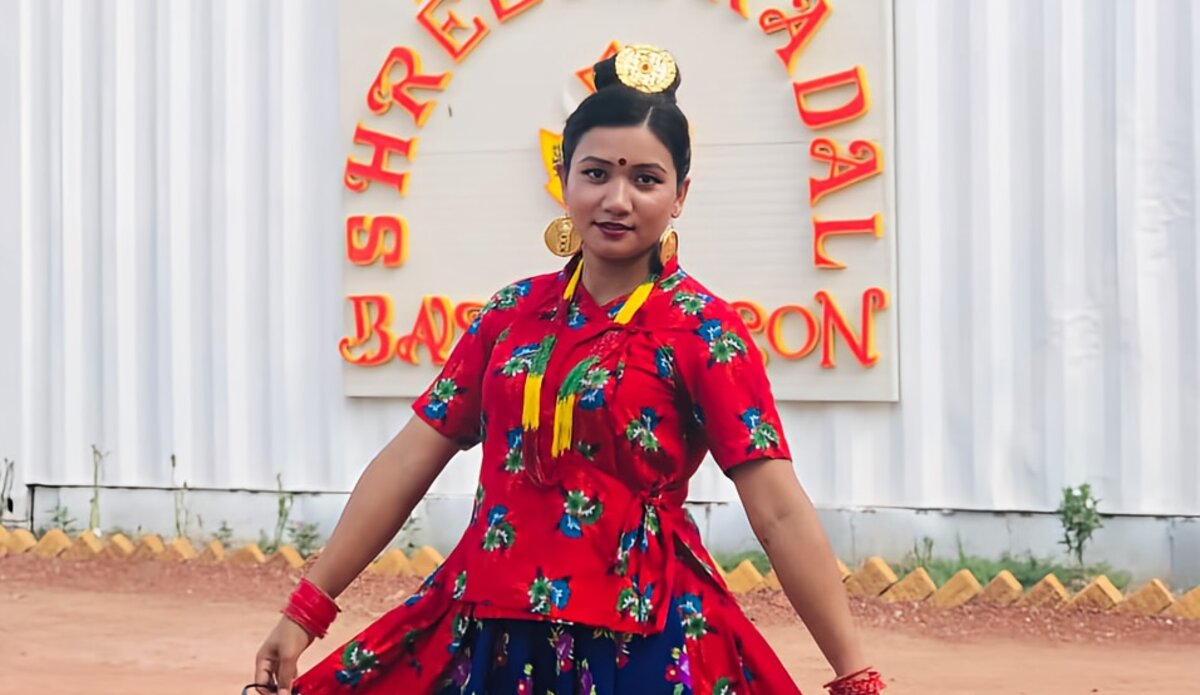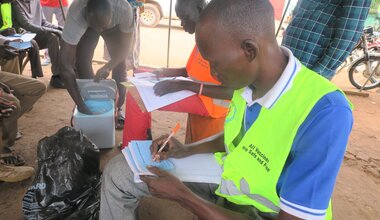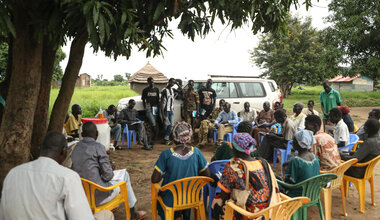Lance Corporal Asha Thapa, the dancing peacekeeper: “Performing arts bring us all together”
LAKES - Peacekeeping missions are multifacetted operations that use a variety of tools to accomplish their objectives. Even their uniformed and armed Blue Helmets are not restricting themselves to merely military means to create peace-conducive conditions where they work. Just ask Asha Thapa, the dancing Lance Corporal from Nepal, based in Rumbek and serving with the United Nations Mission in South Sudan (UNMISS).
"Dancing is a universal language, it helps bridge cultural and linguistic barriers,” she says, explaining that “we” refers to the Nepalese peacekeeping contingent’s cultural performance team.
Though passionate about dancing, Lance Corporal Asha Thapa is not primarily deployed to South Sudan to mesmerize host communities with her flowing moves. She is an experienced soldier, having joined her country’s national army seven years ago and already served with two UN peace operations overseas.
“I decided to apply for peacekeeping posts because the enlightening experiences of Nepalese colleagues that had tried it inspired me. I have no regrets, my journey has been incredibly enriching, but of course it is sometimes painful not to be with my three-year-old child back home,” she reveals.
And yet, it is her exhilirating, proficient dancing that makes Asha Thapa stand out. When she and the Nepalese contingent’s outreach team bring their skills to South Sudanese audiences, preparations are both complicated and meticulous.
The choice of dances to perform, for example, will depend on the context and theme of the particular event. The costumes required for the selected choreographies are then brought from Nepal to South Sudan, where they have to be fitted and adjusted. And then there is, of course, endless hours of rehearsals to perfect the show being prepared.
“Yes, it takes a lot of work, time and dedication, but seeing the joy and the amazement of our spectators makes it all worthwhile. That excitement, and their hospitality, quickly make us forget the many everyday challenges that any peacekeeper will inevitably face,” she says, adding that her team is frequently treated to spontaneous performances put on by their hosts.
“Those are special, emotional moments. I’ll never forget a South Sudanese dance called Dheng-Nhial. Wow! The way they jumped, and how impossibly high they jumped, was truly impressive.”
As for the Nepalese traditional dances being showcased, they hail from different regions of the country and convey a wide range of moods and messages, with each one having its own unique cultural significance. Some are more difficult to pull off than others.
"The Bhert Natyan, for instance, is very fast-paced and requires dancers to maintain a semi-standing position, which strains the knees and quads. The steps are also numerous and need to be memorized precisely. It’s genuinely challenging, but it gives me great joy," the Lance Corporal explains.
But, as is probably the case for most practitioners of art, it is the response to Asha Thapa’s displays that she keeps in her heart.
“Once, a child approached me with two mangoes, gave me one and hugged my leg. From someone with virtually nothing to give, it was a gesture that spoke volumes and touched me deeply. It brought tears to my eyes, and made me think of my own child, far away, back home in Nepal.”
 UN
UN United Nations Peacekeeping
United Nations Peacekeeping





